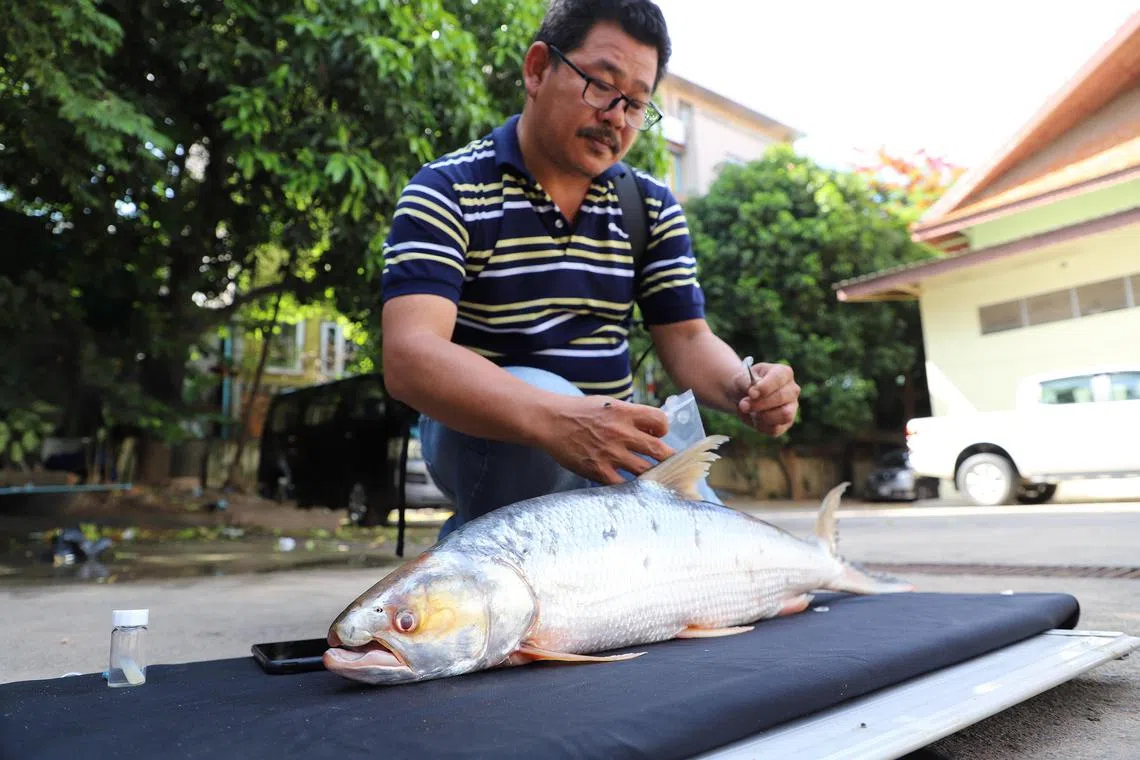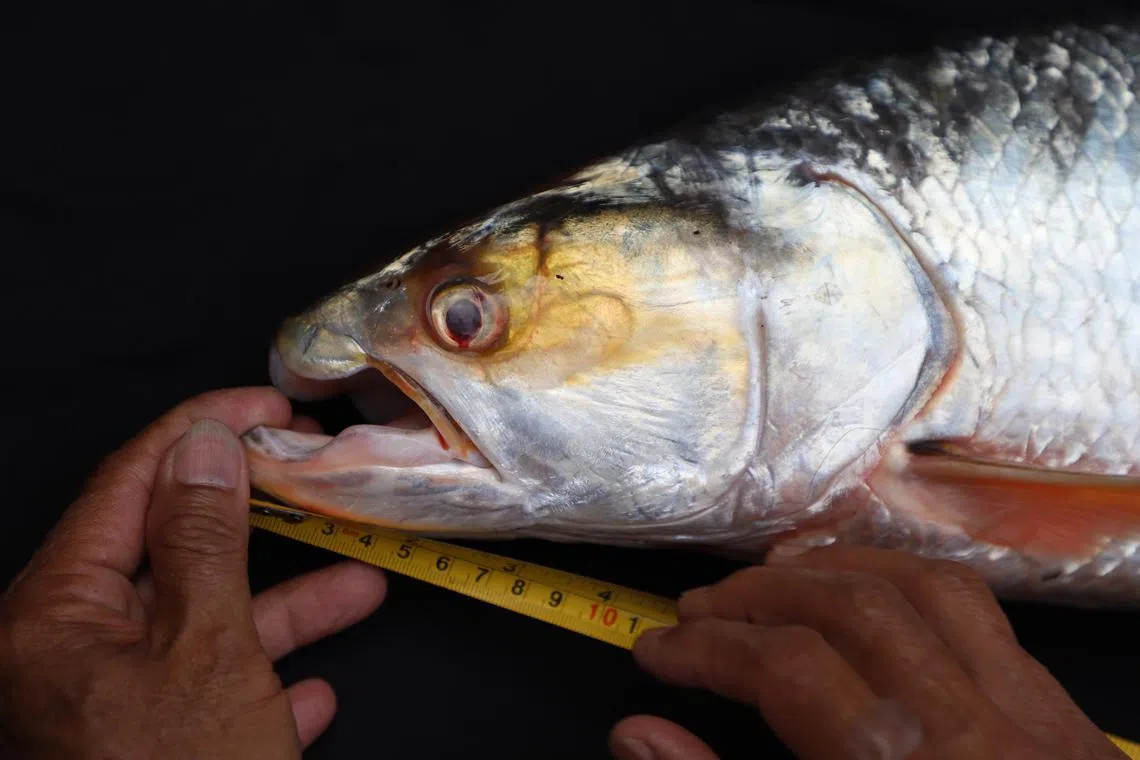This ‘ghost’ fish seemed extinct, until it turned up in unexpected places
Sign up now: Get ST's newsletters delivered to your inbox

An elusive giant salmon carp, nicknamed the Mekong ghost, had not been spotted since 2005 until it was discovered in 2020.
PHOTO: NYTIMES
Follow topic:
The Mekong giant salmon carp is 1.2m long and weighs 30kg. It is so elusive – recorded only 30 times by scientists – that it was nicknamed the “Mekong ghost”, for the South-east Asian river that is its habitat.
The evolutionarily distinct carp species, which is not a salmon but has a salmon-like appearance, had in fact not been spotted by anyone since 2005. Researchers feared it had gone extinct.
But one man kept looking: Mr Chan Sokheng, who had a nearly 30-year career in the Fisheries Administration in Cambodia, and died in 2023.
In 2020, according to conservation colleagues he worked with, he received the call he had been hoping for: A fisherman in northern Cambodia had captured a fish with a sleek silver back, a bolt of yellow across its eye and a pronounced curved jaw. It was the Mekong ghost.
That fish was sold to traders in Vietnam, but other fishermen in the same part of the country reported their own sightings in 2022 and 2023.
Mr Sokheng was able to collect those two animals for study, which were found farther downstream in the Mekong watershed than the salmon carp had ever been discovered, according to a paper published in October in the journal Biological Conservation, informed by Mr Sokheng’s work that announced the species’ rediscovery.
“It was his dream to see that fish, and his dream came true,” said Dr Zeb Hogan, an aquatic ecologist at the University of Nevada, Reno, and an author of the paper.

The elusive giant salmon carp gets its name from its salmon-like appearance.
PHOTO: NYTIMES
The news of the Mekong giant carp’s survival has become “a call to action” for the fishery conservation community in Cambodia and greater South-east Asia to begin efforts to find and protect the species, he added.
“We’ve only ever seen this fish in field guides,” said Mr Heng Kong, director of the Inland Fisheries Research and Development Institute and an author of the study. “We’d like to identify areas where this species is still present, and then work with local communities to get their strong participation in conservation.”
Originating in China and winding through 4,345km of South-east Asia, the Mekong River is the world’s third-most biodiverse waterway. But like many other freshwater ecosystems, it faces myriad threats, like upriver dams in China, Thailand and Laos, as well as overfishing and pollution.
The WWF estimates that 19 per cent of more than 1,100 fish species in the Mekong River are endangered.
Had the Mekong giant salmon carp gone extinct, it would have been the first of the river’s dozen-plus species of megafish – those that weigh more than 30kg – to succumb to that fate.
With its rediscovery, it is now considered to be the river’s most endangered fish.
Because the Mekong giant salmon carp was thought to be extinct, it had not been listed as a protected species in Cambodia or known widely among fishermen.
“Most Cambodians have never even seen or heard about this fish species,” said Mr Chhut Chheana, an author of the study and outreach coordinator at Wonders of the Mekong, a project backed by the US Agency for International Development that aims to maintain the ecological, cultural and economic integrity of the lower Mekong River.
After the salmon carp’s rediscovery, Mr Kong added it to the country’s protected species list.
But legal protections will be effective, he said, only with buy-in from Cambodia’s fishing communities.
“We have our fishery law, but we understand that we need to establish good collaborations with fishermen,” Mr Kong said.
The re-emergence of the Mekong giant salmon carp serves as a symbol of the “vast and threatened freshwater fish diversity” of the Mekong River as a whole and of the urgent need for protections, said Ms Michele Thieme, deputy director for freshwater at WWF-US, who is not involved in the project.
The salmon carp was rediscovered in Stung Treng province, in the main stem of the Mekong River and in one of its major tributaries.
These sites are farther south than where the fish was historically known to occur. Its discovery in these places suggests that the species’ range might be bigger than scientists previously thought.
The question, now, is whether Cambodia represents “the last hope” for the species, Dr Hogan said, or whether the salmon carp, which is migratory, persists in other places. Dr Hogan thinks there is a high likelihood that it does.
He and his colleagues are organizing a search across Cambodia, Laos and Thailand for surviving populations. Their efforts will include conducting environmental DNA surveys to detect evidence of the species in water samples.
“We’re going to have teams going out to look for this fish in a more serious way than ever before,” Dr Hogan said. “It wouldn’t surprise me if we found fish in all three countries.” NYT

